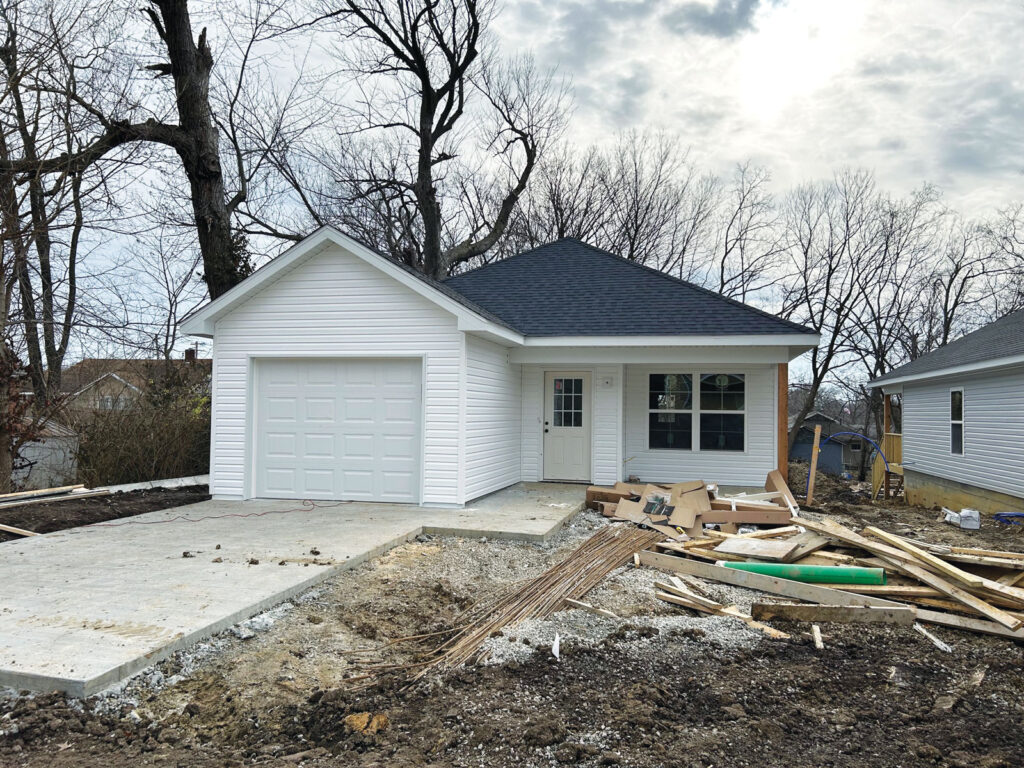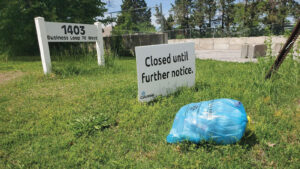Making money is the American way. But what happens when it’s at odds with those who need shelter to survive?
Housing affordability is a hot topic in news coverage. If you’re a homeowner with a comfortable mortgage or a renter who has money left over every month to make car payments, buy groceries, eat out, and take vacations, the subject may not mean much to you.
But those two words hit close to home if you’re homeless, about to be evicted because you can’t afford the upcoming increase in your rent, or if you’re one of the 62 percent of people in the United States who live paycheck to paycheck, as reported by Lending Club. The same is true if you can’t get a Section 8 housing voucher because you don’t quite qualify, or there aren’t any left where you live, or if you have a voucher but can’t find a landlord who will accept it.
Shelter is a basic requirement. It’s among the psychological needs at the base of Maslow’s hierarchy of needs, next to breathing, water, food, sleep, and clothing. And yet in this country, one of the wealthiest in the world by multiple measures, shelter is not a constitutional right.
Private businesses and landowners control the country’s commerce and industry and while developers and landlords benefit from their rental property investments, hundreds of Columbia residents struggle to find a place they can afford.
What is the relationship between the basic need for shelter and a free-market society? It’s complicated, to say the least.
The Gulf Between Income and Housing Costs
The major issue in housing affordability is the massive gap between the cost of rents and the incomes of many Columbia residents. Most elderly or disabled adults are on fixed incomes. Adults who are employed can’t earn enough to afford the rental units available. It’s a matter of simple economics.
According to the Regional Economic Development Inc. (REDI) 2023 “Facts and Figures” report, the median household income for Boone County is $51,276. That’s an hourly wage of about $24.65. However, the Missouri minimum wage as of January 1, 2024, is about half that — $12.30 per hour or roughly $25,584 per year.
In 1981, the U.S. government began defining those who spend more than 30 percent of their monthly gross income on housing as “cost-burdened.” That’s because if you’re spending more than 30 percent, you have only what’s remaining to pay taxes and spend on groceries, healthcare, transportation, childcare, clothing, and other expenses. Darin Preis, executive director of Central Missouri Community Action Agency, cites the statistic that 50 percent of renters in Columbia are housing cost-burdened.
According to data from the National Low Income Housing Coalition, you must earn $24 an hour or more to afford $1,000 in rent to avoid becoming cost-burdened. If you’re at Columbia’s median income, you can spend about $1,280 on rent to stay at or below 30 percent. But if you earn only minimum wage, 30 percent is only $639.60. However, according to Rent.com, the numbers are problematic. The average rent for a one-bedroom apartment in Columbia is $850, which would require earning at least $15 an hour. Only 1 percent of rental properties fall into the $500-$700 range, and 66 percent rent for more than $1,000 a month.
While these one-bedroom numbers compared to incomes are eye-opening, bear in mind that it’s more often families who struggle to find affordable housing. Families need more space.
Landlords Want a Return on Their Investment
At face value, the solution seems easy. Landlords need to reduce the amount of rent they charge so more people can afford to live in them. But if the landlord isn’t a nonprofit or governmental organization, their properties are investments, and they want them to yield a profit. As the cost to build, renovate, and maintain rental units continues to rise, and mortgage rates remain high, landlords find themselves needing to charge more — not less — to make a profit.
Then, there’s the simple law of supply and demand. A market like Columbia is driven by the transient student population which can pay more, often by splitting rent among multiple students. And currently, the rental vacancy rate is just 5 percent — the lowest that number has been in a decade, says Conrad Hake, program director for Love Columbia.
When demand is high and supply is low, landlords are in the driver’s seat.
“The economics just don’t work,” Preis says. “If you purely apply market-driven solutions to this problem, there is no solution.”
The Columbia Housing Authority administers Section 8 housing vouchers for the Department of Housing and Urban Development. Randy Cole, the housing authority’s executive director, says that any landlord can accept housing vouchers if their properties meet certain requirements. One criterion is HUD’s annual maximum rental rates. The second criterion is rent reasonableness.
“This is basically like how a realtor might run comps on a home sale,” Cole says. “The rent may be at the top end, but it can still be reasonable based on its location, its amenities, what’s in the unit, and relative to other units within that location.”
If landlords want or need to charge more than HUD will pay, they will. And even if a property could meet HUD criteria, many landlords choose to not accept vouchers, especially after investing in renovations and other improvements. Some voucher holders, who have been exemplary tenants for years, suddenly find themselves facing eviction when a landlord raises the rent.
Under Cole’s leadership, CHA has become more aggressive in attracting landlords who accept vouchers and ensuring that properties are well maintained for renters. CHA currently works with 300 landlords and employs a housing ambassador to help landlords and prospective renters navigate the system. CHA has worked to increase the number of vouchers allotted locally and increased utilization of them by $1 million between fiscal years 2020 and 2022. They’re on pace to have all CHA’s vouchers in use by the end of the first quarter of 2024.
Despite those positive strides, there are still many Columbia residents who can’t find an affordable place to live. As CHA works to find a place for everyone holding a voucher, the issue remains that there aren’t enough vouchers to fill the need.

Location, Location, Location
Merely having affordable rental units available isn’t enough. Columbia residents with lower incomes often can’t afford to own and maintain a vehicle, which means they rely on public transportation to get to work, buy groceries, and access healthcare and other services. Location is crucial.
The University of Missouri and MU Health Care are unsurprisingly Columbia’s two major employers. Moreover, their physical location in the heart of the city attracts other businesses that employ significant numbers of those earning minimum wage and slightly above. Safe and reliable transportation is a must for maintaining employment, so living within walking distance of a workplace or near a bus stop is vital.
Zoning and infill policies are often barriers to building high-density affordable housing in central locations. Love Columbia helped organize Columbia’s Affordable Housing Coalition, which explores policy changes that could help expand multi-family affordable housing in the city. Hake says there are opportunities for the development of new units on vacant lots in central Columbia if such issues as setback requirements and infill limitations are revised in current zoning regulations.
“It’s worth keeping in mind that someone may not want a six- or eight-story high-rise built next to their single-family home,” Hake says. “But there are also situations where the lot can’t have a house built on it just because the required setbacks are ten feet in either direction. So, some movement on zoning and setbacks would help make some progress.”
Of course, several affordable housing units have been built in Columbia over the years, but the number of units can’t keep up with demand. Cole says the current voucher inventory is less than five hundred units. Columbia needs more.
In addition to affordable housing units built by CHA, some have emerged from nonprofit and government partnerships and others have been built by private developers with government assistance and incentives. CHA is building thirty-four new units at its Kinney Point development at Sexton Road near Garth Avenue. CMCA received funding from the city via the American Rescue Plan Act (ARPA) to help cover about one-third of the cost of building fourteen units on a vacant lot on Providence Avenue in the crucial city center.
It’s Complicated
The relationship between affordable housing here and the people who need it is a fraught one. A local leader says private developers aren’t bad people just because they don’t want to build Section 8-qualified housing. They’re exercising their right to earn money. Likewise, affordable housing advocates emphasize that people who need help paying for housing in Columbia aren’t looking for a handout — they’re trying to survive.
Cole, Hake, and Preis say there needs to be more government funding and incentives for the construction of affordable housing units. It takes a village to get them done. For example, CHA’s Kinney Point is funded by low-income tax credits, the Missouri Housing Development Commission, city of Columbia ARPA funds, and Veterans United.
There are no simple solutions to the growing problem of housing affordability because the needs of tenants and private landlords are at odds.
“From a landlord’s perspective, it’s a financial investment that’s intended to provide for their financial security, which is higher up the needs hierarchy. Whereas the resource they’re providing is a survival resource for a household,” Hake says. “As long as that discrepancy exists, we’re going to see a power imbalance between the two.”
Columbia agencies and organizations are exploring solutions. But that’s a challenge when incomes need to rise, and housing costs need to fall. Neither government nor private developers can solve the problem on their own. It will take more. Perhaps together, advocates say, everyone can get what they want while providing others with what they need.








